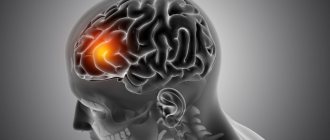Cognitive behavioral therapy (CBT) is a form of psychotherapy that emphasizes the importance of how our thoughts and emotions influence our behavior. During cognitive behavioral therapy, patients are asked to focus on their thoughts, beliefs, and attitudes and understand how they relate to problem behavior. By working through this process, a person can learn healthy ways to cope with difficult emotions and challenging life situations. Cognitive behavioral therapy can help a person lead a happy, fulfilling life by changing the way they think and behave.
What is Cognitive Behavioral Therapy?
Unlike other therapeutic strategies, cognitive behavioral therapy focuses on a person's current, rather than past, life situation. Cognitive behavioral therapy emphasizes that people can learn to be their own therapists by developing coping skills when dealing with difficult thoughts and emotions.
Cognitive behavioral therapy is useful for a number of mental health conditions and substance use disorders, including (but not limited to):
- Depression
- Anxiety disorders
- Alcohol use disorder
- Methamphetamine addiction
- Eating disorders
Since the 1960s, cognitive behavioral therapy has become one of the most common and useful therapeutic models for treating mental health conditions and substance use disorders. Research shows that cognitive behavioral therapy leads to significant improvements in behavior and quality of life.
Benefits of Cognitive Behavioral Psychotherapy
Behavioral cognitive psychotherapy, the exercises of which have been proven to change the neurotransmitter background of the central nervous system, is not least because of this, one of the most widespread in the modern world.
Cognitive psychotherapy for personality disorders, obsessive-compulsive disorders, depression, hypomania, other affective and neurotic disorders, and even the psychotic level without exacerbations - the list is constantly expanding as more and more verified data on the clinical effectiveness of the method are obtained.
But cognitive psychotherapy is used not only as a treatment tool: confidence exercises are used for individual and group work on personal growth, and in cohesion training.
In essence, cognitive psychotherapy is a “hygiene” of thinking, which, through painstaking work, delicately and without violence, clears maladaptive patterns of behavior from the mind, replacing them with adaptive, harmonious models of intra- and interpersonal development, and also teaches to prevent the consolidation of pathological cognitions in later life.
Specialists
Ashmeiba Nino Anatolyevna
Psychotherapist, psychiatrist
doctor of the highest category
more than 15 years of experience
37 positive reviews
- Suggestive therapy
- Reconstructive-personal psychotherapy
- Rational psychotherapy
- Individual psychotherapy
Make an appointment
Fastovets Elena Vladimirovna
Psychotherapist, psychiatrist
more than 15 years of experience
59 positive reviews
- Individual psychotherapy
- Family psychotherapy
- Cognitive behavioral psychotherapy
- Reconstructive-personal psychotherapy
Make an appointment
Abakumova Elena Viktorovna
Psychiatrist, psychotherapist
more than 20 years of experience
90 positive reviews
- Ericksonian hypnosis
- Neurolinguistic programming
- Cognitive behavioral psychotherapy
- Holotropic Breathwork
Make an appointment
Krylatykh Victoria Yurievna
Psychotherapist, psychiatrist
more than 15 years of experience
115 positive reviews
- Individual psychotherapy
- Family psychotherapy
- Neurolinguistic programming
- Cognitive behavioral psychotherapy
Make an appointment
Zherekhov Alexey Borisovich
Psychotherapist, psychiatrist
more than 15 years of experience
29 positive reviews
- Body psychotherapy
- Cognitive behavioral psychotherapy
- Child-parent relationships
- Art therapy
Make an appointment
Mamaeva Yulia Vladimirovna
Psychotherapist, psychiatrist
first category doctor
more than 10 years of experience
1 positive review
- Individual psychotherapy
- Group psychotherapy
- Child-parent relationships
- Art therapy
Make an appointment
If you find it difficult to choose a psychotherapist, call us or fill out an application. We will help you find a specialist with whom you will feel comfortable.
Fill out an application
Types of Cognitive Behavioral Therapy
Cognitive behavioral therapy is considered a family of interventions. Over the years, various types of cognitive behavioral protocols have been developed to better address various disorders, including post-traumatic stress disorder, obsessive-compulsive disorder, and social anxiety disorder.
Each protocol uses different therapeutic methods, although they have common features. The main common thread is the belief that harmful thoughts can lead to emotional distress. Changing unhealthy thoughts reduces psychological pain and destructive behavior.
Types of cognitive behavioral therapy include:
- Acceptance and Commitment Therapy : Uses a set of techniques to gain understanding and acceptance of negative emotions and thoughts rather than trying to change them
- Cognitive therapy: Emphasizes recognizing and changing problematic thought patterns, emotional reactions and behavior
- Dialectical Behavior Therapy: Emphasizes that patients can improve their responses to emotional stimuli by accepting their life problems; exercises contribute to the development of skills that help the patient to accurately observe and describe his thoughts
- Mindfulness-based cognitive therapy: Emphasizes the present moment and increasing awareness of how automatic reactions lead to emotional distress; patients are encouraged to gently recognize and accept their thoughts and feelings with an open mind
- Multimodal therapy: Focuses on treating seven different aspects of personality, including behavior, affect, sensation, imagery, cognition, interpersonal relationships, drugs, or biology.
- Rational Emotional Behavior Therapy: Focuses on transforming irrational views into balanced views to transform dysfunctional emotions and behaviors into functional ones.
- Trauma-focused cognitive behavioral therapy: a structured program that focuses on treating single or multiple traumas and their subsequent negative emotions and behaviors
Faculty of Consultative and Clinical Psychology, Moscow State University of Psychology and Education (CAO)
Address : st. Sretenka, 29 Website : https://www.pk.mgppu.ru Telephone Cost : 200,000 rub.
Course: Cognitive psychotherapy of emotional and personality disorders supervisory workshop A.B. Kholmogorova and N.G. Garanyan.
Duration of study: 2 years (4 semesters), 200 ac. hours.
The program is aimed at the formation and development of skills in diagnosis and psychotherapy of epidemiologically significant disorders (depressive, anxiety, personality) of different ages.
Main sections:
- CBT for depressive disorders
- CBT for anxiety disorders
- CBT for personality disorders
- CBT for emotional disorders in childhood and adolescence
Upon completion of training, participants receive a certificate of advanced training.
How does TOS work?
The principles of cognitive behavioral therapy argue that obstructive thought processes and learned patterns of unhelpful behavior contribute to psychological problems. A person can make positive changes in their life by actively working to understand and change these destructive thoughts and behaviors.
During cognitive behavioral therapy, the patient and therapist work together to understand the patient's difficulties and develop a treatment plan aimed at changing the problematic thoughts, feelings, or behaviors.
Plans to change existing cognitive models include:
- Learn to recognize and accept harmful thoughts and emotions
- Understanding other people's motives
- Gaining Self-Confidence
- Learn how to properly cope with stressful situations
Strategies for changing problem behavior include:
- Learn to face your fears
- Practice how to stay calm in difficult situations
Methods of cognitive behavioral therapy
The range of techniques used during cognitive behavioral therapy include:
- Cognitive restructuring: the process of identifying and overcoming negative thoughts and beliefs
- Mindfulness: Focus on the present moment while gently accepting feelings and thoughts
- Relaxation: visualization, breathing techniques, massage and medications (if necessary)
- Problem Solving: Learn to constructively solve everyday problems
- Exposure therapy: gradual exposure to scary situations in a safe environment
- Role play: acting out situations that cause anxiety while discussing associated harmful thoughts and emotions with a therapist
- Homework: reading or writing assignments that reinforce the theme of each therapy session
- Skills training: teaching specific social skills, communication skills, and self-confidence that can help a person successfully cope with difficult life situations
VGAPS
Website : https://vgaps.ru Phone , Cost : 5,700 rub.
Course: CBT as a method of psychocorrection for addictive and suicidal behavior, anxiety and depressive disorders Advanced training, 108 hours, 6 weeks
The program is designed for psychologists, psychotherapists, and specialists working with complex conditions and emotional disorders. Students will receive a fairly short-term, effective method of psychotherapy that focuses on behavior transformation. They will master its basic and modern techniques.
In a programme:
- Fundamentals, theory and practice of CBT
- Behavioral psychotherapy as the basis of CBT: history of formation. Prospects for the direction of CBT
- CBT techniques and techniques, limitations of use. Psychological education of the client within the framework of the cognitive-behavioral approach
- Psychotherapeutic relationships in CBT. Defining and honing the characteristics and skills of a cognitive behavioral therapist
- CBT by A. Beck. Cognitive conceptualization. Personality structure in CBT
- Rational-emotive psychotherapy by Albert Ellis
- CBT for depressive and anxiety-phobic disorders
- CBT for suicidal behavior
- CBT for addictions
- CBT for self-esteem and self-confidence
Studying each discipline includes familiarization with the theory, reading electronic textbooks and lecture texts, and participation in webinars. In the distance learning system, students complete assignments, take tests, communicate with teachers during webinars, on a forum or via Skype.
As a result of studying under the program, you will receive a certificate of advanced training.
What to Expect During a CBT Session
CBT treatment is short-term compared to some other forms of treatment. A cognitive behavioral therapist typically spends the first few sessions assessing the problems or issues causing the client's distress. The client and therapist will then develop a treatment plan and a list of goals for the sessions.
The number of sessions will vary, but can last up to 16 weeks (assuming one session per week). Most CBT sessions last about 60 minutes, depending on the therapist's recommendation. When someone attends a CBT session, there is often an agenda with structure. For example, a therapist may want to focus on specific techniques or skills to break destructive habits and offer healthier alternatives. Cognitive behavioral therapy sessions can be done one-on-one or in a group with other patients or family members.
The person will spend time identifying and analyzing the thoughts, feelings, and circumstances that lead to destructive thoughts. This functional analysis during cognitive behavioral therapy can identify areas where barriers or challenges to coping still exist.
Without identifying and addressing these problems, a person may face a higher risk of future problems. Gradual exposure to fearful situations can also be used during cognitive behavioral therapy sessions to help the client cope with such situations slowly without experiencing negative thoughts or emotions. Homework assignments, which may include reading homework, writing projects, or assignments, are used in conjunction with therapy sessions to enhance the focus of each week.
Goals and Benefits
Cognitive behavioral therapy can help people develop coping skills that can be used both immediately and in the future to manage destructive thoughts, emotions and behaviors. Each therapy session can have both short-term and long-term goals tailored to the individual's individual concerns.
By the end of the therapy course, people will be able to better control their behavior, using their new way of thinking to cope with difficult thoughts and feelings. The goal of cognitive behavioral therapy is to resolve problematic thoughts and behaviors, improve functioning, and achieve remission.
After cognitive behavioral therapy, a person can expect a decrease in their symptoms. Coping skills learned through cognitive behavioral therapy may also prevent future episodes of emotional distress. Because CBT focuses on learning practical coping skills, many people see positive results quickly.
For people who have lost the ability to care for themselves, leave a job, or manage their finances, cognitive behavioral therapy can provide valuable tools to rebuild their lives.
Higher School "Learning Environment"
Website : https://psychology.sredaobuchenia.ru Cost : 70,000 rub.
Rational-Emotive-Behavioral Therapy Duration of training: 6 months (1 semester), 250 ac. hours
Rational-Emotive-Behavioral Therapy (REBT) is a direction in psychotherapy and psychological counseling proposed by Albert Ellis. The method has existed and developed since 1955, is the most recognized within the Cognitive-Behavioral direction in psychology and is actively coming to Russia.
Program "Rational-Emotive-Behavioral Therapy":
- Based on the most modern protocols and offering only up-to-date knowledge
- Allows you to study the “gold standard” of psychotherapy, the global trend of evidence-based medicine
- Aimed at increasing your demand in the market of psychological services - many clients are looking for specialists in the Cognitive-Behavioral approach
- It is focused on practice and contains a large number of practical classes, in which real psychological problems and cases will be examined under the supervision of leading psychologists
Program content 250 academic hours (176 - theory and practice; 74 - independent work)
Practice takes up 50% of classes and takes place in mini-groups under the supervision of practicing psychologists. By analyzing the real problems of group members and analyzing mistakes, they develop the skills that are necessary to start working with clients’ emotional problems: diagnosis, conceptualization, restructuring of irrational beliefs.
Module 1. Introduction to the basics of REBT (46 academic hours) Module 2. General therapy strategies (46 academic hours) Module 3. Diagnostics and ABC conceptualization (46 academic hours) Module 4. Therapeutic interventions. Disputation and formation of an effective response (65 academic hours) Module 5. Integrity of the therapeutic process. Beginning and end of therapy (47 academic hours)
Based on the results of the program, students
- Will receive the necessary professional knowledge and skills in the field of Rational-Emotive-Behavioral Therapy
- They will be able to begin to apply the REBT approach in practice: conduct initial diagnostics, agree with the client on the goals of therapy, identify and challenge irrational beliefs
- They will begin to use the acquired skills for personal purposes: to regulate and restructure their own irrational beliefs and improve the quality of their life
The effectiveness of cognitive behavioral therapy
Research has shown that cognitive behavioral therapy improves treatment success for a variety of mental disorders in a wide range of people.
In some cases, cognitive behavioral therapy is more effective than other psychotherapeutic approaches. Cognitive behavioral therapy is also successful when used in combination with appropriate medications, helping patients achieve significant symptom reduction.
The use of cognitive behavioral therapy to treat substance use disorders has been growing for over 30 years and is now one of the most widely studied psychosocial interventions for the treatment of drug addiction.
Clinical research consistently shows that coping strategies from cognitive behavioral therapy can improve a patient's chances of achieving long-term recovery. A comparative analysis of 53 clinical studies found that cognitive behavioral therapy was effective in treating a wide range of addictive disorders, including alcoholism, drug abuse, nicotine dependence and many other conditions.
Cognitive Behavioral Therapy Techniques
Basic principles
It is known that in the process of cognitive behavioral therapy (CBT), the patient learns skills to control dysfunctional thoughts and maladaptive behavior patterns. Controlling thinking allows you to control emotions and, therefore, sensations. In my opinion, another important component of the cognitive sphere that should be taken into account when working with a patient is his attitudes or expectations.
Most practitioners of CBT say it aims to change mindsets, conscious and unconscious beliefs, attitudes and ultimately behavior to help cope with challenges and achieve goals. In other words, CBT is useful for both mental health treatment and coaching. CBT draws on experiences from rational and emotive-rational therapy, as well as psychoanalysis, by focusing on helping patients identify, understand, and cope with automatic, emotion-laden thoughts (essentially the “primary complex” of psychoanalysis) that occur regularly and relatively frequently. occur in patients. The therapist and client work together as a team (“guided discovery”) to identify the problems the client is facing, develop strategies to address them, and find positive solutions.
Course of cognitive behavioral therapy
CBT is not intended for lifelong use and is aimed at helping patients achieve their goals in the near future, and therefore these goals should be clarified in the first sessions of psychotherapy. My experience in cognitive-behavioral therapy shows that the course can be limited to 15-20 sessions, that in the first 2-3 sessions it is worth concluding a therapeutic contract with the patient and be sure to give the patient “homework”, regularly checking their completion for at least 5- 10 minutes before starting a new therapy session. Ideally, the psychotherapist should familiarize himself with the completed task before the start of the next session; in this case, the patient first sends his material to the psychotherapist’s email.
Cognitive distortions
In CBT, the therapist and patient work through inaccurate thoughts that reinforce negative thought patterns or emotions. It is worth listing several fairly typical negative behavioral stereotypes.
Filtering is ignoring everything positive and good in life in order to focus solely on the negative. This is the trap of fixating on one negative aspect of a situation, even if it is surrounded by many good things.
Polarization is a cognitive distortion that is all-or-nothing thinking in which there is no room for complexity or nuance—everything is either black or white, not shades of gray. For example, if a patient fails in some area, he may consider himself a complete failure who is unable to do anything, rather than simply admitting that he is merely unskilled in one area.
Generalization or overgeneralization is the use of one episode, case, or point in time as the sole evidence for a general conclusion. For example, someone who overgenerals may fail an important interview and, rather than shrug it off as one bad experience and try again, they come to the conclusion that they are incapable of acing the interview and will never receive a job offer.
Jumping to Conclusions - Similar to overgeneralization, this bias involves erroneous reasoning based on jumping to conclusions. Unlike overgeneralizing from one case, jumping to conclusions refers to the tendency to be confident about something without any evidence. For example, the patient may be convinced that someone significant to him does not love him, without having any real evidence for this hypothesis, or he may believe that his fears will be realized before he has a chance to really know what will happen to him. him actually. Perhaps here we are talking about an exaggerated trust in one’s intuition or insufficient attention to the analysis of facts and details.
Catastrophizing - This distortion involves expecting the worst to happen or has already happened, based on an incident that was not nearly as catastrophic as the patient imagines. For example, he might make a small mistake at work and be convinced that it will ruin the project he was working on, that his boss will be furious, and that he will lose his job. At the same time, the patient downplays the importance of positive things and aspects, such as past achievements at work or his personal strengths.
Personalization is a bias where a person believes that everything he does affects external events or other people, no matter how irrational this may be. A person with this distortion will feel that he plays an exaggerated role in the bad things that happen around him. For example, a person may believe that being a few minutes late for a meeting caused it to fail and that everything would be fine if only he showed up on time. Probably, this thinking error should include ideas of relation, according to the type of everything that happens in the world around me has to do with me.
Locus of control errors - This distortion involves the feeling that everything that happens to the patient is the result of purely external forces or depends entirely on his own actions. Sometimes what happens to us is due to forces we cannot control and sometimes due to our own actions, but the distortion suggests that it is always one or the other. We may assume that difficult employees are to blame for our own less-than-stellar performance, or, alternatively, assume that every mistake another person makes is caused by something we did. In other words, we are talking about the need for a balance between external and internal locus of control in each specific situation.
Fairness - We are often concerned about fairness, but this concern can go to extremes. As we all know, life is not always fair. A person who spends his entire life seeking justice in all his experiences ends up resentful and unhappy. Sometimes things go our way, and sometimes they don’t, no matter how fair it may seem.
CBT in the treatment of addiction and mental health
Research into the success of cognitive behavioral therapy has shown that cognitive behavioral therapy is effective for treating mental disorders. Cognitive behavioral therapy is used to treat many mental illnesses, including:
- Depression
- Anxiety disorders
- Schizophrenia and other psychotic disorders
- Bulimia and other eating disorders
- Personality disorders
- Bipolar disorder
- Post-traumatic stress disorder (PTSD)
- Obsessive-compulsive disorder
- Substance use disorders
- Pregnancy-related disorders
- Anger management disorders
- Phobias
- Insomnia
- Attention deficit hyperactivity disorder (ADHD)
Cognitive behavioral therapy can also be used to treat addiction:
- marijuana
- Alcohol
- Cocaine
- Amphetamines
- Opiates
- Other substances
In individual consultations, a therapist may use cognitive behavioral therapy to help a person identify the automatic thoughts that keep them in a cycle of addictive behavior or contribute to their mental health disorder.
In group counseling, people can actively practice their interpersonal skills and cope with their peers. Through relapse prevention training, they can learn to recognize their substance abuse triggers and recognize early warning signs of a potential relapse.
The skills learned in cognitive behavioral therapy offer a practical way to replace destructive thoughts with positive, self-enhancing beliefs. For people in recovery or people with mental disorders who have lost a sense of control over their lives, cognitive behavioral therapy offers hope for freedom from the cycle of destructive behavior.
In the treatment of addiction and mental health disorders, cognitive behavioral therapy provides patients with the following options:
- Giving them simple, practical tools to change negative beliefs
- Strengthening their confidence and sense of self-determination
- Helping them visualize the future in a positive way
- Helping them develop stronger, more trusting relationships
- Teaching them practical ways to prevent relapse
- Helping them develop sober activities to replace substance use
Although cognitive behavioral therapy is an important component of mental health and substance use disorder treatment programs, therapy alone may not be enough to help everyone achieve their recovery goals. Combining cognitive behavioral therapy with other treatment methods can produce even better results than therapy alone.
At Narcohealth, we use cognitive behavioral therapy to help our patients lead healthy and meaningful lives. If you or someone you love is struggling with a substance use disorder, we can provide all the accommodations you need to achieve recovery.
Cognitive behavioral therapy (CBT) is a form of psychotherapy that emphasizes the importance of how our thoughts and emotions influence our behavior. During cognitive behavioral therapy, patients are asked to focus on their thoughts, beliefs, and attitudes and understand how they relate to problem behavior. By working through this process, a person can learn healthy ways to cope with difficult emotions and challenging life situations. Cognitive behavioral therapy can help a person lead a happy, fulfilling life by changing the way they think and behave.
The most popular cognitive psychotherapy techniques
Treatment of mental disorders using cognitive psychotherapy is not just a way to combat a specific disease. This approach to therapy gives the patient a special perspective on everything that happens in his life. Thus, it is possible to prevent the development of relapses and other mental disorders. A person trained in the basics of cognitive psychotherapy is able to systematically monitor his own negative emotions and transform them into rational thoughts. This method is especially effective in combating panic attacks.
All techniques used in cognitive psychotherapy can be divided into two large groups:
- techniques aimed at identifying automatic thoughts of a negative nature. The main way to achieve this goal is to interview the patient, but the therapist can also use role-playing techniques. After the automatic thought is found by the patient, the therapist must check it with behavioral factors, as well as logical analysis. In some cases, the identified beliefs turn out to be a mythologem, but most often such thoughts nevertheless take place in reality, although they are not realized by the patient. The therapist must identify the relationship between the automatic thought and the traumatic situation and pathological emotional reactions;
- techniques that allow you to identify the unreasonableness of an automatic thought and cognitively reconstruct it. A person will be able to abandon a maladaptive thought only if he is completely sure of its “wrongness.” First of all, the validity of such thinking can be verified by its consequences. This technique is called decatastrophizing or “what if.” The patient imagines the consequences of the situation that frightens him, and understands that in fact nothing terrible will happen. You can push a person to check irrational thoughts with real actions. If the patient suffers from depression, believing that he is not capable of anything, then he can be given small tasks. Their successful implementation will restore a person’s faith in his own strength. The psychotherapist can also invite the patient to compare his situation with another case from his practice. By feeling sorry for a patient with similar problems, the patient automatically feels sorry for himself. As a result, the negative attitude towards oneself changes into pity and sympathy. A similar result can be achieved using the catharsis method, when the therapist encourages the patient to speak out and cry. In addition, there are a large number of other methods that allow you to change cognitive attitudes.
Throughout the course of therapy, the patient receives homework. He must track automatic thoughts and record his feelings in a special notebook. A psychotherapist may recommend reading certain literature and listening to recordings of psychotherapy sessions.
Most often, psychotherapy is individual, but group work can also be used. In the latter case, not the relationships between its individual members are examined, but the rationality of their thinking and behavior is assessed.
What is Cognitive Behavioral Therapy?
Unlike other therapeutic strategies, cognitive behavioral therapy focuses on a person's current, rather than past, life situation. Cognitive behavioral therapy emphasizes that people can learn to be their own therapists by developing coping skills when dealing with difficult thoughts and emotions.
Cognitive behavioral therapy is useful for a number of mental health conditions and substance use disorders, including (but not limited to):
- depression
- Anxiety disorders
- Alcohol use disorder
- Methamphetamine addiction
- Eating disorders
Since the 1960s, cognitive behavioral therapy has become one of the most common and useful therapeutic models for treating mental health conditions and substance use disorders. Research shows that cognitive behavioral therapy leads to significant improvements in behavior and quality of life.
Behavioral psychotherapy techniques
The main methodological approach is that human problems and illnesses are caused by thinking errors (or rather, erroneous interpretations of the surrounding world and people and ideas about them) - cognitions, and it is their presence at the present time that is diagnostically important, and not the fact of psychological trauma in the past : not every trauma and not in every mind becomes a source of problems, and vice versa, not every problem is caused by psychological trauma.
Pathological cognitions can develop very peacefully in various social groups (family, community group, school, work), but their practical application is no less destructive.
Based on this, methods of behavioral psychotherapy can be divided into diagnostic:
- definition of pathological cognitions;
- identification of destructive automatic thoughts (cognitions that are reduced and compressed in consciousness over time to such an extent that they “flash” in a stressful situation, or are not realized at all while working);
and therapeutic:
- learning tactics for managing and neutralizing destructive cognitions and automatic thoughts: first in the imagination, and then in real life;
- independent conscious practice of stressful situations with control of the emergence of old and new pathological cognitions;
- self-examination and self-help for the future.
The goal of behavioral psychotherapy is a psychotherapist-guided understanding of one’s behavior and those thinking errors that lead to disastrous results.
By removing or correcting pathological cognitions, specialists at the Alliance Mental Health Center improve the quality of life of patients and the people around them.
Practitioners of cognitive behavioral psychotherapy consider the following techniques of choice:
- psychotherapeutic conversation according to the “Socratic dialogue” type on an equal basis with the patient. In this case, responsibility for the result is divided in half between the two parties to the treatment process;
- decatastrophization - “What happens after? No one will die? The world won't collapse?
- independent work on observing and recording thoughts (diaries);
- replacing emotions with positive ones;
- changing roles - for example, the patient is asked to imagine himself “giving himself advice from the outside”;
- revision of values.
Types of Cognitive Behavioral Therapy
Cognitive behavioral therapy is considered a family of interventions. Over the years, various types of cognitive behavioral protocols have been developed to better address various disorders, including post-traumatic stress disorder, obsessive-compulsive disorder, and social anxiety disorder.
Each protocol uses different therapeutic methods, although they have common features. The main common thread is the belief that harmful thoughts can lead to emotional distress. Changing unhealthy thoughts reduces psychological pain and destructive behavior.
Types of cognitive behavioral therapy include:
- Acceptance and Commitment Therapy : Uses a set of techniques to gain understanding and acceptance of negative emotions and thoughts rather than trying to change them
- Cognitive therapy: Emphasizes recognizing and changing problematic thought patterns, emotional reactions and behavior
- Dialectical Behavior Therapy: Emphasizes that patients can improve their responses to emotional stimuli by accepting their life problems; exercises contribute to the development of skills that help the patient to accurately observe and describe his thoughts
- Mindfulness-based cognitive therapy: Emphasizes the present moment and increasing awareness of how automatic reactions lead to emotional distress; patients are encouraged to gently recognize and accept their thoughts and feelings with an open mind
- Multimodal therapy: Focuses on treating seven different aspects of personality, including behavior, affect, sensation, imagery, cognition, interpersonal relationships, drugs, or biology.
- Rational Emotional Behavior Therapy: Focuses on transforming irrational views into balanced views to transform dysfunctional emotions and behaviors into functional ones.
- Trauma-focused cognitive behavioral therapy: a structured program that focuses on treating single or multiple traumas and their subsequent negative emotions and behaviors
PsyAndNeuro.ru
In a recent interesting study published in the World Psychiatry Journal, scientists provide the “best current estimate of the effectiveness” of CBT in the treatment of major depressive disorder (MDD), generalized anxiety disorder (GAD), panic disorder (PD), and social anxiety disorder (SAD). Dead salmon, of course, could not pass (swim) past such an important topic, because... The problem of evidence-based methods of psychotherapy still remains very relevant.
It is well known that CBT is the most studied form of psychotherapy, with multiple studies and several meta-analyses showing that CBT is effective in treating depression and anxiety disorders. However, the authors of a new meta-analysis concluded that the effect of CBT and other types of psychotherapy was significantly overestimated for at least three reasons.
First, there is a bias associated with preferential publication of positive study results. It refers to the tendency of authors to submit, and journals to accept, manuscripts for publication based on the direction or strength of research findings. There is significant indirect evidence of publication bias associated with positive trial results in psychotherapy based on over-publication of small studies with significant results. Moreover, there is also direct evidence of such errors: recent research has found that nearly a quarter of US National Institutes of Health-funded studies of depression in adults in psychotherapy were not published. After combining the results of unpublished studies with those that were published, the average effectiveness rate of psychotherapy fell by more than 25%.
Secondly, the quality of many studies leaves much to be desired. In another meta-analysis of 115 studies on the effectiveness of psychotherapy for depression, only 11 met all quality requirements. However, the effect sizes in these studies were significantly smaller than in studies of poorer quality. However, this meta-analysis only included studies conducted before 2008, and many new studies have been conducted since then. Because new research is generally of better quality than previous research, it is unknown what the current best estimate of the effectiveness of CBT is after taking new research into account.
Third, many studies have used a waitlist control group. Although all control conditions in psychotherapy studies have their own problems, the rate of improvement in wait-list patients was lower than expected based on the concept of spontaneous remission. It has therefore been suggested that the waitlist is actually a “nocebo” (the opposite of placebo; an inert treatment that appears to produce the opposite—negative—effect) and that studies using this comparison have greatly overestimated the effectiveness of psychotherapy. Other control groups, receiving usual care and receiving a placebo, provide a more reliable assessment of the effectiveness of CBT.
Thus, during the study, scientists found that the methodological quality of most studies was low or unknown. They assessed the quality of studies using the Cochrane risk of bias tool and found that only 25 studies (17.4%) of all studies across the four disorders were of high quality.
For example, the small number of studies of anxiety disorders that used usual care or placebo control groups have reported small to moderate effect sizes. In four studies comparing CBT for PD with usual care, the effect size was even small (p=0.17). Additionally, due to the small number of studies and even fewer high-quality studies, the effects of CBT in treating anxiety disorders are quite imprecise.
Ultimately, the authors still concluded that CBT may be effective in treating MDD, GAD, BD, and SAD. However (!) the effect is significant only if the control group is provided with a waitlist (nocebo effect), but is small or moderate if the control group receives usual care or a placebo. The authors also pointed out that due to the small number of high-quality studies, these results are still imprecise and should be taken with caution.
This study has several strengths, including the large scope of the meta-analysis covering four common mental disorders, the rigorous selection and evaluation of studies, and the relatively large number of studies. One possible limitation is that the authors used strict inclusion criteria, focusing only on studies in which patients met diagnostic criteria for the disorder according to a structured interview, and studies using control groups of those awaiting treatment, receiving usual care, or receiving a placebo.
In general, dear friends, the results obtained from one of the most studied methods of psychotherapy turned out to be ambiguous. Everything again comes down to the fact that it is simply impossible to adequately select a placebo. Moreover, it is impossible to conduct a “double-blind study”, which is widely used to evaluate the effectiveness of pharmacotherapy and any other treatment method. Those. Ideally, level A and B evidence for psychotherapy methods is an unattainable dream! However, in studies on the effectiveness of psychotherapy as a placebo, scientists, after thinking and giving up, began to use a waiting list, which turned out to be a nocebo. Much more successful “placebo” options have been usual care and pharmaco-placebo (i.e., a lactose tablet), but the effectiveness of psychotherapy in studies with this design is not the most impressive.
In addition, if any of our dear readers were at least a little interested in the mechanisms of placebo, what it can depend on and read various clinical studies of placebo, he correctly understands that comparing psychotherapy with placebo in tablet form is not entirely good. And also, most likely, I thought - is it worth comparing psychotherapy with placebo? Are these two phenomena not having the same mechanisms, the intensity of which also varies depending on different factors?
But that's a completely different story...
PS You can read the original article in Russian (!) on the effectiveness of CBT and many other interesting works in the October issue of World Psychiatry Journal, which is publicly available on the official website of the World Psychiatric Association (the issue was prepared by the Council of Young Scientists of the Russian Society of Psychiatrists).
How does TOS work?
The principles of cognitive behavioral therapy argue that obstructive thought processes and learned patterns of unhelpful behavior contribute to psychological problems. A person can make positive changes in their life by actively working to understand and change these destructive thoughts and behaviors.
During cognitive behavioral therapy, the patient and therapist work together to understand the patient's difficulties and develop a treatment plan aimed at changing the problematic thoughts, feelings, or behaviors.
Plans to change existing cognitive models include:
- Learn to recognize and accept harmful thoughts and emotions
- Understanding other people's motives
- Gaining Self-Confidence
- Learn how to properly cope with stressful situations
Strategies for changing problem behavior include:
- Learn to face your fears
- Practice how to stay calm in difficult situations
Methods of cognitive behavioral therapy
The range of techniques used during cognitive behavioral therapy include:
- Cognitive restructuring: the process of identifying and overcoming negative thoughts and beliefs
- Mindfulness: Focus on the present moment while gently accepting feelings and thoughts
- Relaxation: visualization, breathing techniques, massage and medications (if necessary)
- Problem Solving: Learn to constructively solve everyday problems
- Exposure therapy: gradual exposure to scary situations in a safe environment
- Role play: acting out situations that cause anxiety while discussing associated harmful thoughts and emotions with a therapist
- Homework: reading or writing assignments that reinforce the theme of each therapy session
- Skills training: teaching specific social skills, communication skills, and self-confidence that can help a person successfully cope with difficult life situations
What to Expect During a CBT Session
CBT treatment is short-term compared to some other forms of treatment. A cognitive behavioral therapist typically spends the first few sessions assessing the problems or issues causing the client's distress. The client and therapist will then develop a treatment plan and a list of goals for the sessions.
The number of sessions will vary, but can last up to 16 weeks (assuming one session per week). Most CBT sessions last about 60 minutes, depending on the therapist's recommendation. When someone attends a CBT session, there is often an agenda with structure. For example, a therapist may want to focus on specific techniques or skills to break destructive habits and offer healthier alternatives. Cognitive behavioral therapy sessions can be done one-on-one or in a group with other patients or family members.
The person will spend time identifying and analyzing the thoughts, feelings, and circumstances that lead to destructive thoughts. This functional analysis during cognitive behavioral therapy can identify areas where barriers or challenges to coping still exist.
Without identifying and addressing these problems, a person may face a higher risk of future problems. Gradual exposure to fearful situations can also be used during cognitive behavioral therapy sessions to help the client cope with such situations slowly without experiencing negative thoughts or emotions. Homework assignments, which may include reading homework, writing projects, or assignments, are used in conjunction with therapy sessions to enhance the focus of each week.
Goals and Benefits
Cognitive behavioral therapy can help people develop coping skills that can be used both immediately and in the future to manage destructive thoughts, emotions and behaviors. Each therapy session can have both short-term and long-term goals tailored to the individual's individual concerns.
By the end of the therapy course, people will be able to better control their behavior, using their new way of thinking to cope with difficult thoughts and feelings. The goal of cognitive behavioral therapy is to resolve problematic thoughts and behaviors, improve functioning, and achieve remission.
After cognitive behavioral therapy, a person can expect a decrease in their symptoms. Coping skills learned through cognitive behavioral therapy may also prevent future episodes of emotional distress. Because CBT focuses on learning practical coping skills, many people see positive results quickly.
For people who have lost the ability to care for themselves, leave a job, or manage their finances, cognitive behavioral therapy can provide valuable tools to rebuild their lives.
"Introvert's Right Brain"
Website : https://online.artforintrovert.ru Phone Cost : 2890 rub.
Video course: Cognitive psychology 6 blocks, 12 hours
On the course we:
- Let's trace the history of the development of the cognitive approach
- Let's see how great thinkers and scientists prepared first the behavioral and then the cognitive revolution in science
- Let's take a closer look at how our cognitive processes trigger conditions such as depression, anxiety, guilt and low self-esteem
- We will pay much attention to practical work: we will consider the tools that cognitive behavioral psychotherapists use in their practice
Topics of video lectures:
- History of psychotherapy from Socrates to CBT
- Cognitive distortions and compensatory strategies
- Being your own therapist: how cognitive self-help works
- Depression
- Anxiety and phobias
- Guilt, shame and self-esteem
You immediately get eternal access to all course lectures. The kit includes notes for consolidating knowledge and lists of recommended literature. After completing the course, a certificate is issued.
The effectiveness of cognitive behavioral therapy
Research has shown that cognitive behavioral therapy improves treatment success for a variety of mental disorders in a wide range of people.
In some cases, cognitive behavioral therapy is more effective than other psychotherapeutic approaches. Cognitive behavioral therapy is also successful when used in combination with appropriate medications, helping patients achieve significant symptom reduction.
The use of cognitive behavioral therapy to treat substance use disorders has been growing for over 30 years and is now one of the most widely studied psychosocial interventions for the treatment of drug addiction.
Clinical research consistently shows that coping strategies from cognitive behavioral therapy can improve a patient's chances of achieving long-term recovery. A comparative analysis of 53 clinical studies found that cognitive behavioral therapy was effective in treating a wide range of addictive disorders, including alcoholism, drug abuse, nicotine dependence and many other conditions.
Goals and methods of cognitive psychotherapy
The main goal of cognitive psychotherapy is to identify dysfunctional thoughts in the patient and their subsequent transformation. But, besides this, experts identify five goals of cognitive therapy:
- complete elimination of the symptoms of the disorder or reduction in the manifestations of the pathology;
- prevention of relapse after correction of mental state;
- improving patients’ perception of other types of therapy, including medications;
- resolution of a person’s psychological and social problems that may arise against the background of the disorder or immediately before its manifestation;
- elimination of the prerequisites that gave impetus to the development of the disorder.
During treatment, the therapist helps the patient understand the extent to which his thoughts influence his behavior, emotions, and physical condition. After a full course of cognitive therapy, a person can independently identify thoughts that negatively affect his psychological state. And most importantly, change dysfunctional beliefs into more rational thoughts.
The main methods of cognitive therapy include combating negative thinking, using alternative strategies for perceiving problem situations, re-experiencing events from the past, and imagination. Each of these methods is aimed at giving the patient the opportunity to relive and forget negative experiences, as well as acquire new learnings.
Cognitive psychotherapy is often complex. In addition to cognitive methods, psychotherapists in their work use various behavioral techniques that successfully complement each other.
CBT in the treatment of addiction and mental health
Research into the success of cognitive behavioral therapy has shown that cognitive behavioral therapy is effective for treating mental disorders. Cognitive behavioral therapy is used to treat many mental illnesses, including:
- Depression
- Anxiety disorders
- Schizophrenia and other psychotic disorders
- Bulimia and other eating disorders
- Personality disorders
- Bipolar disorder
- Post-traumatic stress disorder (PTSD)
- Obsessive-compulsive disorder
- Substance use disorders
- Pregnancy-related disorders
- Anger management disorders
- Phobias
- Insomnia
- Attention deficit hyperactivity disorder (ADHD)
Cognitive behavioral therapy can also be used to treat addiction:
- marijuana
- Alcohol
- Cocaine
- Amphetamines
- Opiates
- Other substances
In individual consultations, a therapist may use cognitive behavioral therapy to help a person identify the automatic thoughts that keep them in a cycle of addictive behavior or contribute to their mental health disorder.
In group counseling, people can actively practice their interpersonal skills and cope with their peers. Through relapse prevention training, they can learn to recognize their substance abuse triggers and recognize early warning signs of a potential relapse.
The skills learned in cognitive behavioral therapy offer a practical way to replace destructive thoughts with positive, self-enhancing beliefs. For people in recovery or people with mental disorders who have lost a sense of control over their lives, cognitive behavioral therapy offers hope for freedom from the cycle of destructive behavior.
In the treatment of addiction and mental health disorders, cognitive behavioral therapy provides patients with the following options:
- Giving them simple, practical tools to change negative beliefs
- Strengthening their confidence and sense of self-determination
- Helping them visualize the future in a positive way
- Helping them develop stronger, more trusting relationships
- Teaching them practical ways to prevent relapse
- Helping them develop sober activities to replace substance use
Although cognitive behavioral therapy is an important component of mental health and substance use disorder treatment programs, therapy alone may not be enough to help everyone achieve their recovery goals. Combining cognitive behavioral therapy with other treatment methods can produce even better results than therapy alone.
At Narcohealth, we use cognitive behavioral therapy to help our patients lead healthy and meaningful lives. If you or someone you love is struggling with a substance use disorder, we can provide all the accommodations you need to achieve recovery.
Other useful articles on the topic:
Symptoms of computer game addiction
July 10, 2019
Computer game addiction - symptoms, treatment and frequently asked questions.
Personality Disorder Symptoms
July 4, 2019
Personality disorders are grouped into three clusters based on similar symptoms and characteristics.
What is depression?
June 29, 2019
Institute "Insight" (JSC)
Address : st. Udaltsova, 14 Website : https://msc.ins-i.ru Phone Cost : on request
Program participants receive theoretical knowledge, master the methodology and basis of behavioral and cognitive psychology, psychotherapy and psychological counseling, and gain practical skills from the arsenal of the modern CBT approach.
The basic CBT course consists of 7 modules:
- Introduction to Cognitive Behavioral Psychotherapy
- Cognitive conceptualization
- Cognitive restructuring
- Cognitive restructuring techniques
- Behavioral restructuring techniques
- Exposure therapy
- Assessing the effectiveness of CBT
Advanced course for CBT therapists
To take the advanced course, you must complete the basic course.
Covers the following topics:
- CBT for phobias and panic disorder
- CBT for generalized anxiety and obsessive-compulsive disorder
- CBT for depressive disorders
- CBT for acute stress and ptsd
- CBT for addictive behavior
- CBT for personality disorders
- CBT for somatoform, psychosomatic and somatic disorders










